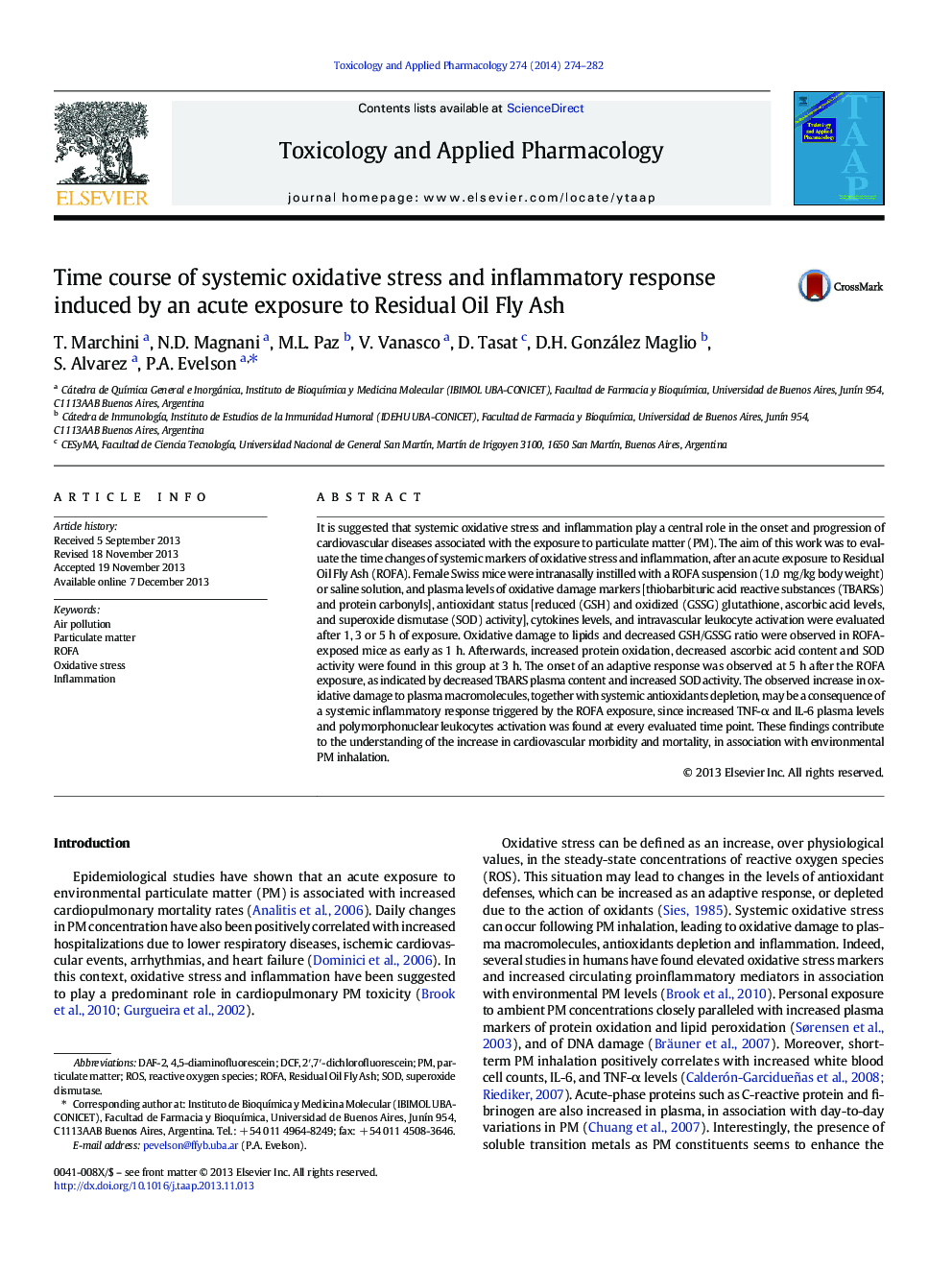| Article ID | Journal | Published Year | Pages | File Type |
|---|---|---|---|---|
| 5846341 | Toxicology and Applied Pharmacology | 2014 | 9 Pages |
â¢An acute exposure to ROFA triggers the occurrence of systemic oxidative stress.â¢Changes in plasmatic oxidative stress markers appear as early as 1 h after exposure.â¢ROFA induces proinflammatory cytokines release and intravascular leukocyte activation.â¢PMN activation is a relevant source of reactive oxygen species in this model.â¢These findings may account for previously described cardiopulmonary alterations.
It is suggested that systemic oxidative stress and inflammation play a central role in the onset and progression of cardiovascular diseases associated with the exposure to particulate matter (PM). The aim of this work was to evaluate the time changes of systemic markers of oxidative stress and inflammation, after an acute exposure to Residual Oil Fly Ash (ROFA). Female Swiss mice were intranasally instilled with a ROFA suspension (1.0 mg/kg body weight) or saline solution, and plasma levels of oxidative damage markers [thiobarbituric acid reactive substances (TBARSs) and protein carbonyls], antioxidant status [reduced (GSH) and oxidized (GSSG) glutathione, ascorbic acid levels, and superoxide dismutase (SOD) activity], cytokines levels, and intravascular leukocyte activation were evaluated after 1, 3 or 5 h of exposure. Oxidative damage to lipids and decreased GSH/GSSG ratio were observed in ROFA-exposed mice as early as 1 h. Afterwards, increased protein oxidation, decreased ascorbic acid content and SOD activity were found in this group at 3 h. The onset of an adaptive response was observed at 5 h after the ROFA exposure, as indicated by decreased TBARS plasma content and increased SOD activity. The observed increase in oxidative damage to plasma macromolecules, together with systemic antioxidants depletion, may be a consequence of a systemic inflammatory response triggered by the ROFA exposure, since increased TNF-α and IL-6 plasma levels and polymorphonuclear leukocytes activation was found at every evaluated time point. These findings contribute to the understanding of the increase in cardiovascular morbidity and mortality, in association with environmental PM inhalation.
